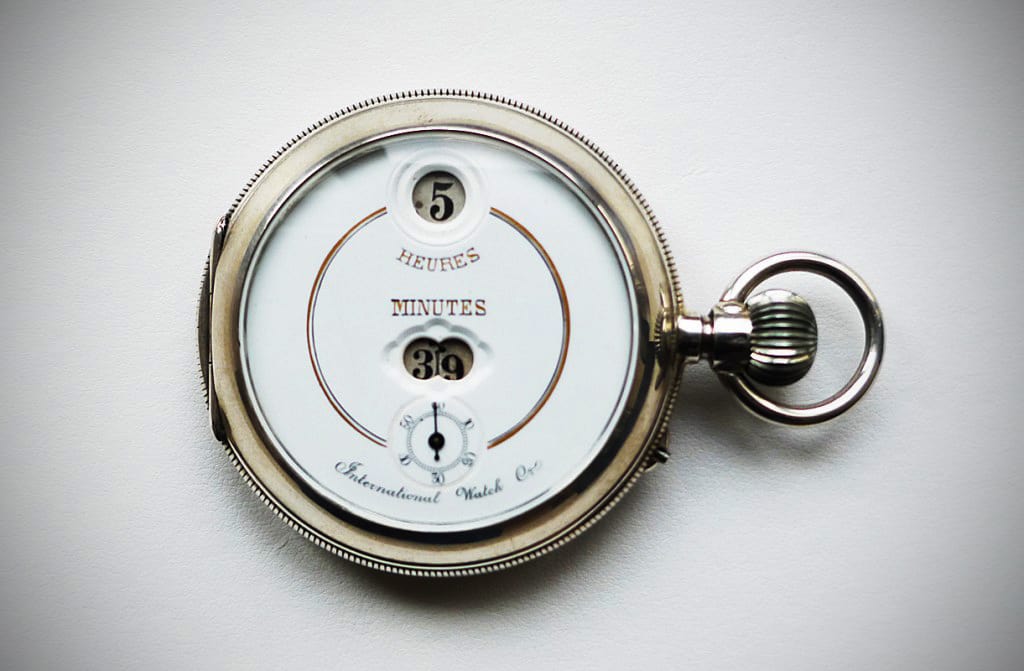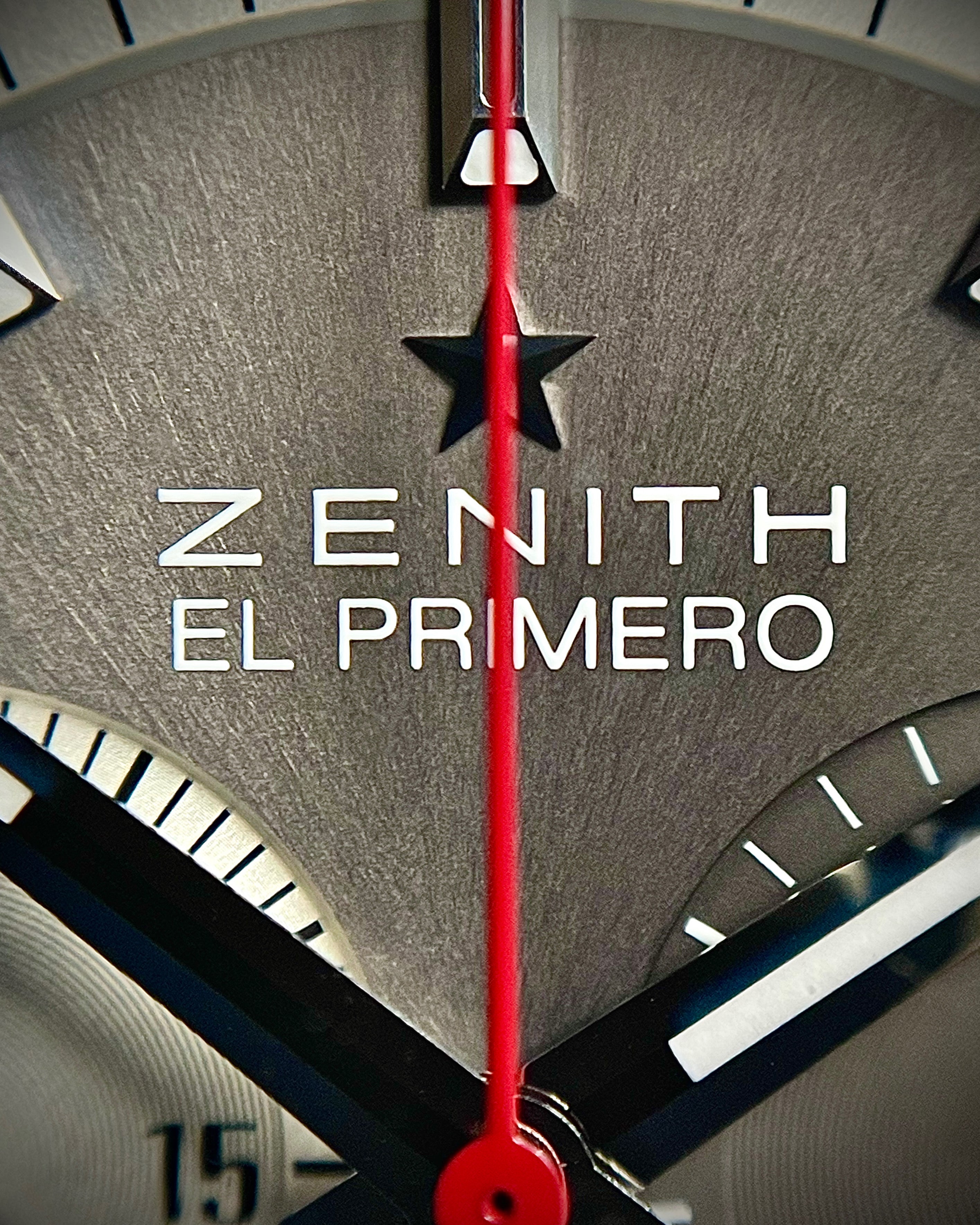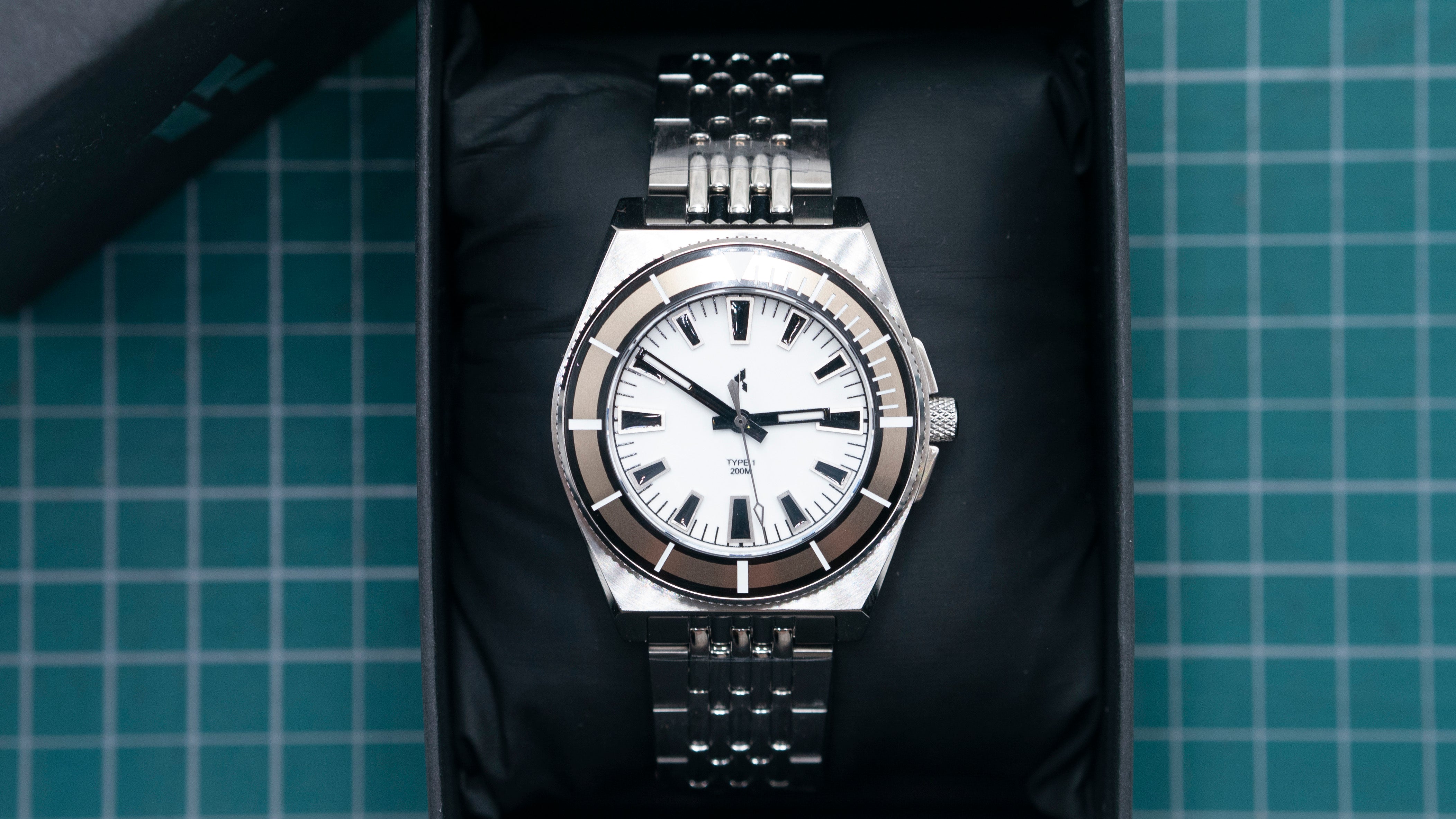
The History of the Jump Hour Watch: A Unique Complication | VARIO
Initially patented for the pocket watch, the jump hour has often taken a backseat to sweeping movements. Now it's making a comeback, but how did we get here?
Even before the rise in popularity of electronic timepieces, jump hour movements were far less common than their smooth, sweeping counterparts. Named for the distinct ‘jump’ the hour hand makes between hour markers, earlier versions of these watches also incorporated dial windows for the hours and minutes, though they retained sweeping seconds due to the complexity required for jumping seconds.
Despite their minority status, owners of jump hour watches have always held these pieces in high regard. Due to their uniqueness and intriguing designs, they are a beloved part of many collections, especially since they can be harder to come by. Now, as more consumers reject the concept of owning watches simply for their price point and status, those traits have pushed jump hour watches to the forefront. Their time is now.
But before we get to the current evolution of jump hour timepieces, let’s look at how we got here.
 IWC Jumping Hour Pocket Watch. Photo by IWC Pocket Watch.
IWC Jumping Hour Pocket Watch. Photo by IWC Pocket Watch.
THE INVENTION OF THE JUMP HOUR (1883) – BEFORE THE WRISTWATCH
There’s a general assumption that the many variations we have of the modern wristwatch and its features came after the invention of the iconic WW1 Trench Watch. But the first mass-produced jump hour movement existed nearly four decades before the first Trench was strapped to a wrist.
In 1883, Austrian engineer Josef Pallweber filed the first patent for a jump hour movement on a pocket watch. Before this, the only instance of a jump movement in recorded history was created by French watchmaker Blondeau for Louis Philippe I, the King of France, at the beginning of his reign. Through licensing, companies like IWC and Cortebert were able to sell hundreds of Pallweber jump hour pocket watch pieces, and while these were impressive figures in the nineteenth century, the design would gain far more traction in the 1920s.

Rolex Rose Gold Marconi Jump Hour. Photo by 1st DIBS.
ART DECO – THE FIRST REVIVAL
One of the first major art movements following WW1, Art Deco (1910s – 1940s) saw watchmakers drawing inspiration from the straight lines, heavy geometry, and luxurious, manmade materials that defined the genre to innovate watch designs. It was during this period that the jump hour would make its first resurgence, bringing us some iconic pieces that are still highly coveted to this day.
Rolex Rose Gold Marconi Jump Hour (1920)
One of the earliest jump hour pieces from the roaring 20s, ROLEX’s 9k Rose Gold Marconi featured a solid rose gold watch face with three dial windows displaying changes by the hour, minute, and second using Arabic numbers. Here, the movement was used to capture the spirit of the period’s designs flawlessly, as the bold, minimal watch face was a direct result of the jump hour’s capabilities. It also made it much easier to tell the time at a glance, as the current hour and minute readings were always in aperture focus.
Bulova White Prince (1932)
Released closer to the end of the Art Deco period, the Bulova White Prince was one of two jump hour pieces produced by Bulova in 1932 – the other, Bulova Jump Hour, holding a rectangular shape instead of the White Prince’s tonneau. Both watches bear some resemblance to the Rose Gold Marconi, but the hour, minute, and seconds dial windows were spaced irregularly, and the minute aperture held a compressed high arch shape while the seconds aperture was a compressed low arch. Available dial options included gold and white gold, and the jump hour feature gave the watch face a stronger, more solid look.

Rolex Rose Gold Marconi Jump Hour. Photo by CataWiki
THE DAWN OF ELECTRONIC DIGITAL – 1970S REVIVAL
When electronic watches began to take off in the 1970s, the nature of the technology meant they were digital – that is, they displayed numbers on their faces. While electronic digital watches are currently some of the most affordable on the market, at the time of their release, they were relatively much more expensive. Enter jump hour watches, which saw their second popularity surge following the 20s and 30s. They had already been making digital pocket watches and wristwatches possible for close to a century at this point.
Cambio Jump Hour (1970s)
This Swiss wind-up watch took the aperture feature typical of watches from the Art Deco period and reimagined the elements to more closely resemble the compact, LCD display look of early electronic watches. The shape of the watch also changed, as while it maintained a rectangular design, the longer sides faced the straps. The jump hour offered a much more affordable alternative to electronic digital watches, maintaining the effect of a ‘jump’ between hours and minutes without showing the movement of the seconds via a rotating disc.
Sicura Jump Hour (1970s)
Originally manufactured by Breitling before its Sicura acquisition, the Sicura 1970s Jump Hour used a combination of dial windows and hands to create one of the more unique jump hour watches from the 70s. Similar to the Cambio Jump Hour, it has a long rectangle shape, though the design more closely resembles a nautical-inspired dashboard than an electronic digital watch. The hour and day apertures sit at opposite ends of the watch face, while an arch at the top displays the minutes. Below, a red and white propeller hand turns once every sixty seconds.
As electronic digital watches became cheaper and faster to mass produce, jump hour watches again took a backseat to a dominant watch design. But another popularity surge seems to be coming, and we think this once might stick.
 Christopher Ward Jumping Hour. Photo by Christopher Ward
Christopher Ward Jumping Hour. Photo by Christopher Ward
JUMP TO THE PRESENT: THE MODERN JUMP HOUR MOVEMENT
The versatility and timelessness of the jump hour movement is evident in its longevity. From the inception of the wrist watch until now, while responses have been mixed, it has retained loyal fans. In the 20s, it was a status symbol, and in the 70s, it was an affordable alternative. Now, it’s a highly unique element, and if you’re looking for a jump hour watch of your own, here are some recommendations.
IWC Tribute to Pallweber Edition “150 Years” (2018)
One of the first jump hour manufacturers, IWC recently returned to its roots with the release of a tribute Pallweber Edition. A modern luxury piece, it maintains the aperture for the hours and minutes, with a small seconds hand at the bottom of the watch. Minimalist and sleek, this model is available in variations of blue, white, gold, and silver, and runs upwards of USD 30,000.
Christopher Ward C1 Grand Malvern
Another classy minimalist design, the C1 Grand Malvern features an hour aperture in the 12 o clock position, a minute hand, and no seconds hand. Like the IWC Tribute, the face is available in a striking blue or pristine white, and the markers are lined, leaving the correct hour as the only numeral on the watch. A Swiss-made visually pleasing model, this one falls at a price point of around USD 2000.
ИAVI x POPEYE Jumping Hour
VARIO has been a consistent creator of watches that sit at the ideal intersection of quality and price, and their ИAVI x POPEYE Jumping Hour series is no different. Taking the Nautical cues from steam ships, this watch incorporates many seafaring elements, the use of an optical lens to magnify the jump hour aperture, a well loved Popeye, and the Seagull Jumping hour movement ST1721 to keep prices affordable and allow enthusiasts to enjoy this complication without paying a hefty price tag. The ИAVI x POPEYE is a jump hour watch that any watch lover can own, and retails at only USD 398.

Check out our ИAVI x POPEYE Jumping Hour Watch
https://vario.sg/pages/vario-x-popeye
The Evolution of the Art Deco Wristwatch
https://vario.sg/pages/the-evolution-of-the-art-deco-wristwatch-vario
Story of 1918 WW1 Trench watch
https://vario.sg/pages/ww1-trench-watch
Story of Eclipse Bauhaus watch
https://vario.sg/pages/story-of-vario-eclipse-watch
Buying A Microbrand Watch? Here's Everything You Should Know
https://vario.sg/blogs/products/buying-a-microbrand-watch-heres-everything-you-should-know-vario



댓글 남기기
이 사이트는 hCaptcha에 의해 보호되며, hCaptcha의 개인 정보 보호 정책 과 서비스 약관 이 적용됩니다.